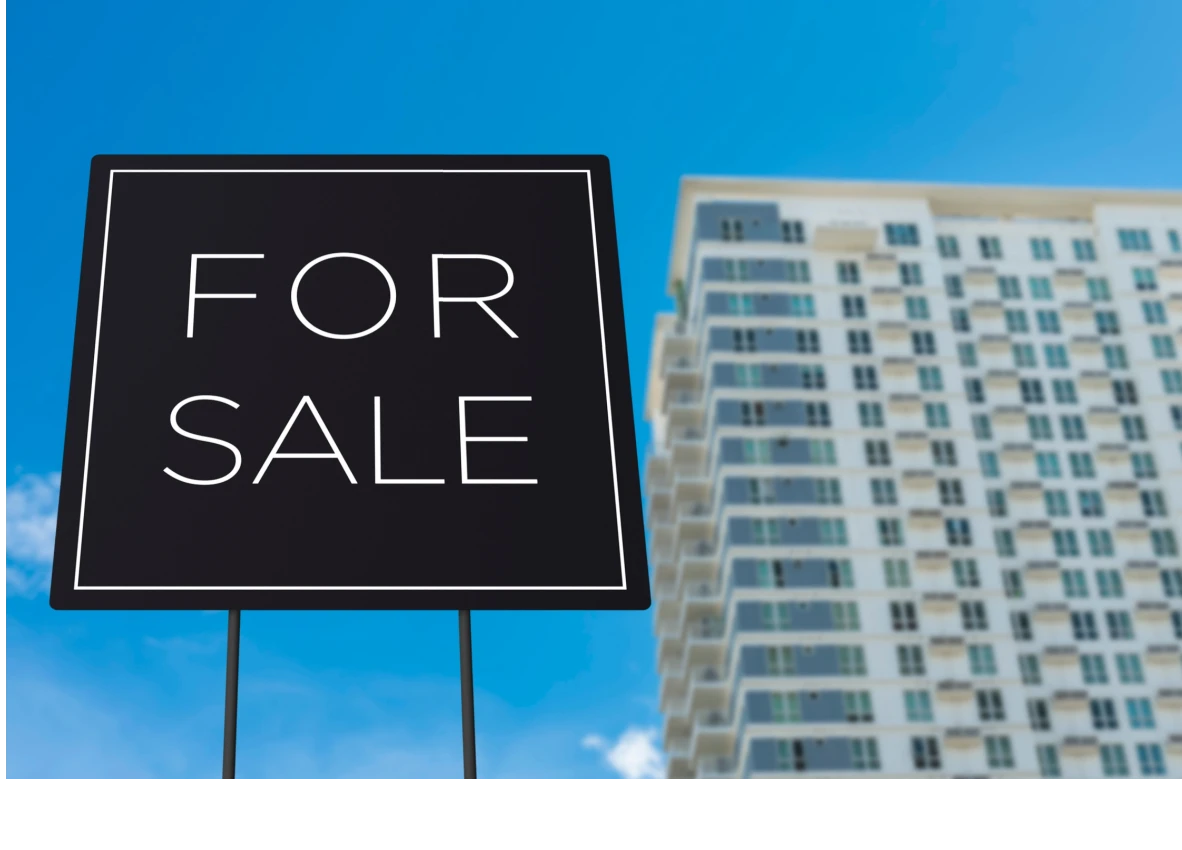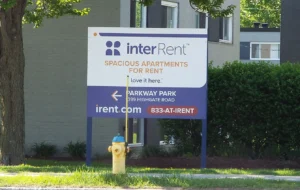Home·Property Management·How to Prepare a Multifamily Property for Sale
What You Need to Know

How to Prepare a Multifamily Property for Sale
Selling a multifamily property can be a big step for real estate investors. Are you ready to cash out or trade up from your duplex, triplex, or apartment building? Getting your property ready for sale is key to attracting buyers and maximizing your return on investment.
Preparing a multifamily property for sale involves more than just a fresh coat of paint. You’ll need to spruce up the exterior, update units, gather financial records, and market effectively. Smart upgrades can boost your property’s value and appeal to potential buyers.
With the right approach, you can position your multifamily property for a successful sale. From fixing maintenance issues to staging units, every detail matters. A well-prepared property stands out in a competitive market.
Let’s explore actionable strategies to ensure your property stands out in the competitive market and attracts serious investors.
Key Takeaways
-
Clean, update, and repair your property to boost curb appeal and value
-
Organize financial documents and tenant records for potential buyers
-
Create effective marketing materials to showcase your property’s strengths
Evaluating the Property’s Value and Potential
Determining your multifamily investment property’s worth is key to setting the right price. You’ll need to look at market trends, income potential, and how interest rates affect buyer decisions.
A thorough property analysis is crucial in determining the property’s value, as it involves examining both current and historical data to make informed investment decisions.
Conducting a Thorough Market Analysis
Market research is vital for pricing your property correctly. Start by checking recent sales of similar properties in your area. Look at factors like location, size, and amenities.
Compare your property to others that have sold recently. Make adjustments for differences in features. For example, if your building has a newer roof, you might add value compared to a similar property with an older one.
Don’t forget to consider the neighborhood’s future. Are there new developments or improvements planned? These could boost your property’s appeal to buyers.
Assessing Rental Income and Tenant Turnover
Your property’s income potential is a big part of its value. Review your rent roll carefully. Look at current rents and compare them to market rates.
Reviewing tenant leases is crucial to understanding the property’s income potential. Check your vacancy rates. Low turnover can be attractive to buyers. It shows stable income and happy tenants.
Consider ways to boost rental income. Could you add amenities or upgrade units to justify higher rents? Even small improvements can increase your property’s value.
Understanding Interest Rates and Investment Goals
Interest rates play a huge role in property values. When rates are low, buyers can afford higher prices. Keep an eye on current rates and trends.
Think about different types of buyers and their goals. Some may want steady cash flow, while others look for properties they can improve and sell quickly. It’s also crucial to have cash reserves to cover mortgage payments in case of unexpected changes in rental income.
Use the capitalization rate to estimate value. Divide your net operating income by the current market cap rate. This gives you a ballpark figure for your property’s worth.
Remember, your property’s value isn’t just about numbers. Its potential for improvement and future income growth can make it stand out to the right buyer.
Preparing Legal and Financial Documentation
Getting your paperwork in order is key to a smooth sale. You’ll need to gather and organize various documents to show potential buyers the property’s financial health and legal standing.
Hiring a title company is essential to ensure that the property has a clear and marketable title, addressing any defects for a smooth property transfer.
Organizing Leases and Service Contracts
Start by collecting all current leases. Make sure they’re up-to-date and easily readable. Create a system to track lease terms, rent amounts, and tenant information. This helps buyers understand the property’s income potential.
Next, gather your service contracts. These might include:
-
Landscaping
-
Pest control
-
Maintenance agreements
-
Utility contracts
Organize these by expiration date and cost. Buyers will want to know what ongoing commitments come with the property. Engaging a reputable property management company can facilitate managing these leases and service contracts, ensuring efficient day-to-day operations.
Compiling Profit and Loss Statements and Insurance Policies
Prepare detailed profit and loss statements for at least the past three years.
These should show:
-
Rental income
-
Operating expenses
-
Net operating income
Be ready to explain any unusual expenses or income fluctuations. This transparency builds trust with potential buyers.
Gather all insurance policies related to the property. Include:
-
Property insurance
-
Liability coverage
-
Flood insurance (if applicable)
Make sure these policies are current and adequately cover the property’s value.
Understanding the 1031 Exchange and Other Tax Considerations
A 1031 exchange can be a powerful tool when selling your multifamily property. It allows you to defer capital gains taxes by reinvesting the proceeds into a like-kind property.
Key points to remember:
-
You must identify a replacement property within 45 days of selling
-
The purchase must be completed within 180 days
-
The new property should be of equal or greater value
Consult with a tax professional to explore other tax strategies. They can help you minimize your tax liability and maximize your profits from the sale.
Enhancing Property Appeal and Addressing Maintenance
Preparing a multifamily building for sale requires attention to detail and strategic improvements. Focus on key areas that will catch buyers’ eyes and boost property value.
Improving Curb Appeal and Common Areas
Curb appeal is crucial for making a great first impression. Start by sprucing up the landscaping. Trim overgrown bushes, mow the lawn, and add colorful flowers. A fresh coat of paint on the exterior can work wonders.
Don’t forget the common areas inside. Update lobby furniture, install new lighting fixtures, and consider adding amenities like a fitness center or community room. These upgrades can significantly increase tenant appeal and property value.
Small touches matter too. Clean windows, power wash walkways, and ensure all signage is clear and attractive. Remember, you want potential buyers to envision the property’s potential from the moment they arrive.
Identifying and Completing Necessary Repairs
Walk through each unit with a critical eye. Look for obvious issues like leaky faucets, loose doorknobs, or cracked tiles. Fix these problems promptly.
Don’t overlook less visible repairs. Check the roof, HVAC system, and plumbing. Address non-critical issues based on urgency and available resources. Prioritize repairs that impact safety or major systems.
Consider hiring a professional inspector. They can spot potential problems you might miss. This proactive approach can prevent surprises during buyer inspections and negotiations.
Managing Deferred Maintenance Issues
Tackle any backlog of maintenance tasks. This might include updating old appliances, replacing worn carpets, or repainting units. These improvements can dramatically increase the property’s appeal.
Don’t forget about energy efficiency. Upgrade to LED lighting, install programmable thermostats, or add insulation. These changes can lower operating costs and appeal to environmentally conscious buyers.
Marketing and Negotiating the Sale
Selling a multifamily property requires a strategic approach to attract the right buyers and secure the best deal. A well-planned marketing campaign and skilled negotiation tactics are key to maximizing your property’s value in the market. Collaborating with a real estate agent can ensure a smoother transaction by leveraging their expertise in crafting offers, negotiating terms, and providing essential market insights.
Developing a Targeted Marketing Campaign
Marketing your multifamily property is crucial for a successful sale. Start by identifying your target audience. Are you aiming for institutional investors or individual buyers? Create a compelling property profile highlighting key features like location, unit mix, and cash flow potential.
Use professional photos and videos to showcase your property. Virtual tours can be a game-changer, especially for out-of-town investors. Don’t forget to highlight recent upgrades or renovations.
Leverage online platforms and social media to reach a wider audience. Consider targeted ads on real estate websites. Networking at industry events can also help you connect with potential buyers.
Remember, timing is everything. Launch your campaign when market conditions are favorable for sellers.
Attracting Investors and Potential Buyers
To attract serious investors, focus on the numbers. Prepare a detailed financial package including:
-
Current rent roll
-
Operating expenses
-
Cash flow projections
-
Potential for value-add improvements
Highlight factors that make your property stand out:
-
Strong rental demand in the area
-
Low tenant turnover rates
-
Recent upgrades or renovations
Consider hosting an open house for qualified buyers. This gives them a chance to see the property firsthand and ask questions. Be prepared to discuss your property’s performance and potential.
If you’re not comfortable handling inquiries yourself, consider working with a commercial real estate broker specializing in multifamily properties. They can help you reach a wider network of potential buyers. Proper management and preparation for multifamily investments are crucial to maximize their value.
Conducting Due Diligence and Closing the Deal
Once you’ve found a potential buyer, the due diligence process begins. Be prepared to provide:
-
Property inspection reports
-
Environmental assessments
-
Detailed financial records
-
Copies of leases and contracts
Negotiating the sale can be complex. Stay firm on your asking price, but be open to reasonable concessions. Consider factors like:
-
Closing timeline
-
Contingencies
-
Financing terms
If negotiations stall, creative solutions like seller financing or a lease-option agreement might help close the deal. Always consult with a real estate attorney to protect your interests.
During the closing process, work closely with your broker or attorney to address any last-minute issues. Be prepared for possible delays and have a backup plan in case the deal falls through.
Frequently Asked Questions About Sale Preparation For a Multifamily Property
What are the key steps in preparing a multifamily property for market?
Preparing a multifamily property for market is a multi-step process. You’ll need to spruce up the property, gather financial records, and set a competitive price. Start by fixing any maintenance issues, then stage units to look their best. Next, compile rent rolls and expense reports. Finally, work with a realtor to determine the right listing price.
Which improvements can increase the value of a multifamily property before sale?
Improvements that boost value focus on curb appeal and unit upgrades. Fresh paint, new flooring, and updated appliances can make a big difference. Don’t forget about common areas – a renovated lobby or new landscaping can impress potential buyers. Energy-efficient upgrades like LED lighting or new windows can also add significant value.
How can owners ensure their multifamily property is compliant with local regulations before listing it for sale?
Compliance is crucial when selling a multifamily property. You should review local zoning laws, building codes, and safety regulations. Check that all units meet current fire safety standards. Make sure you have proper permits for any recent renovations. It’s wise to hire a professional inspector to catch any issues you might have missed.
What are the best marketing strategies for a multifamily property listing?
Effective marketing strategies highlight your property’s strengths. Create a professional listing with high-quality photos and virtual tours. Use online platforms and social media to reach a wide audience. Network with local real estate agents and investors. Consider hosting an open house for serious buyers to see the property in person.
How should you conduct due diligence when selling a multifamily property?
Due diligence protects you and streamlines the sale process. Review all leases and tenant records. Check for any pending legal issues or disputes. Assess the condition of major systems like HVAC and plumbing. Be ready to provide detailed financial statements and tax records. Having this information ready can help you purchase with additional confidence. In real estate investing, thorough due diligence is crucial to minimize risks and ensure a successful investment.
What financial documents are necessary when listing a multifamily property for sale?
Financial documents are key to selling a multifamily property. You’ll need income statements, balance sheets, and cash flow reports. Provide rent rolls showing current occupancy and rates. Include tax returns for the past few years. Utility bills and maintenance records are also important. Buyers want a clear picture of the property’s financial health.
Preparing a Multifamily Property For Sale – Conclusion
Selling a multifamily property requires a blend of preparation, strategy, and attention to detail. Enhancing curb appeal, addressing maintenance issues, and organizing financial records is critical to presenting your property in the best light.
Remember to highlight your property’s strengths, such as tenant stability or recent upgrades, to appeal to buyers. A well-prepared property not only sells faster but can also command a higher price.
By following these steps, you’re setting yourself up for a smoother sales process and maximizing your return on investment.
Source: Willowdale Equity
Get AAOA's Newsletter
Property Management News Categories
- Affordable Housing
- Collections
- COVID-19
- Eviction
- Fair Housing
- Financing
- Going Green
- Government
- Investing
- Landlord Forms
- Landlord Quick Tips
- Latest News
- Leasing
- Legal Brief
- Legal News
- Maintenance
- Make Extra Money
- Marketing Vacant Units
- Property Management
- Real Estate Investing
- Real Estate Trends
- Remodel and Repair
- Rent Magazine
- Security Deposit Alternatives
- Social Media
- Tax Tips
- Technology
- Tenant Screening
- Uncategorized













 Accessibility
Accessibility